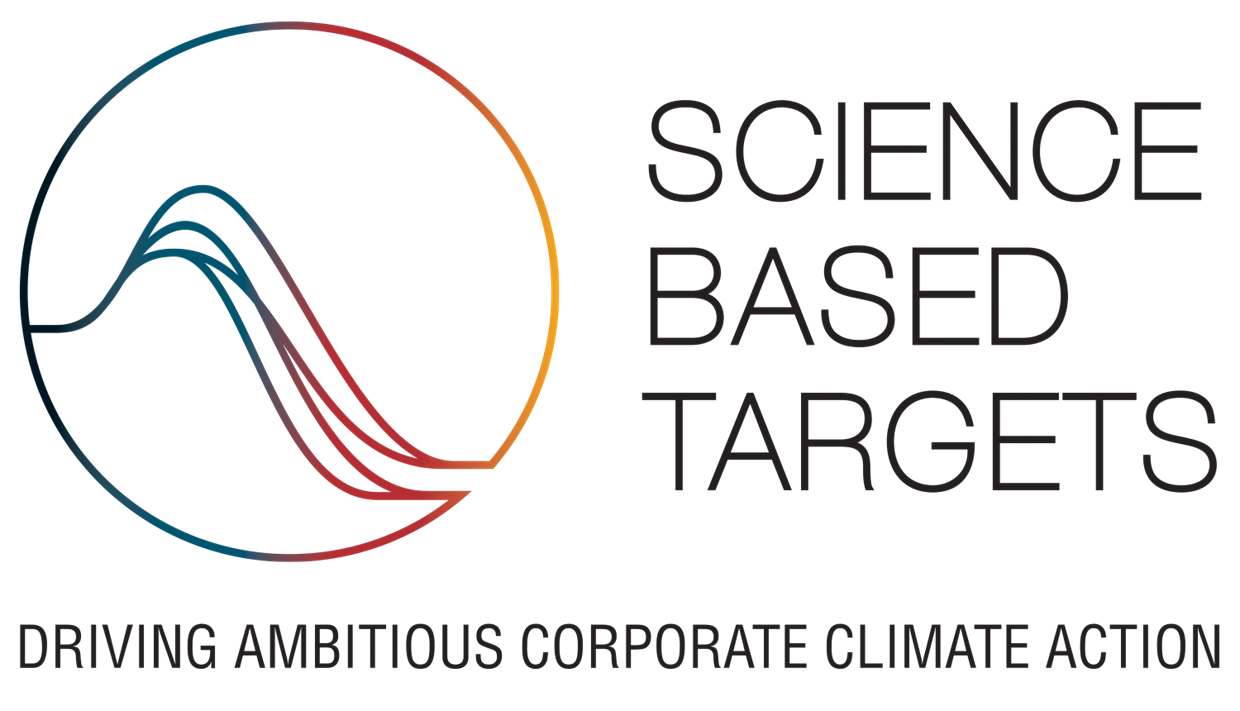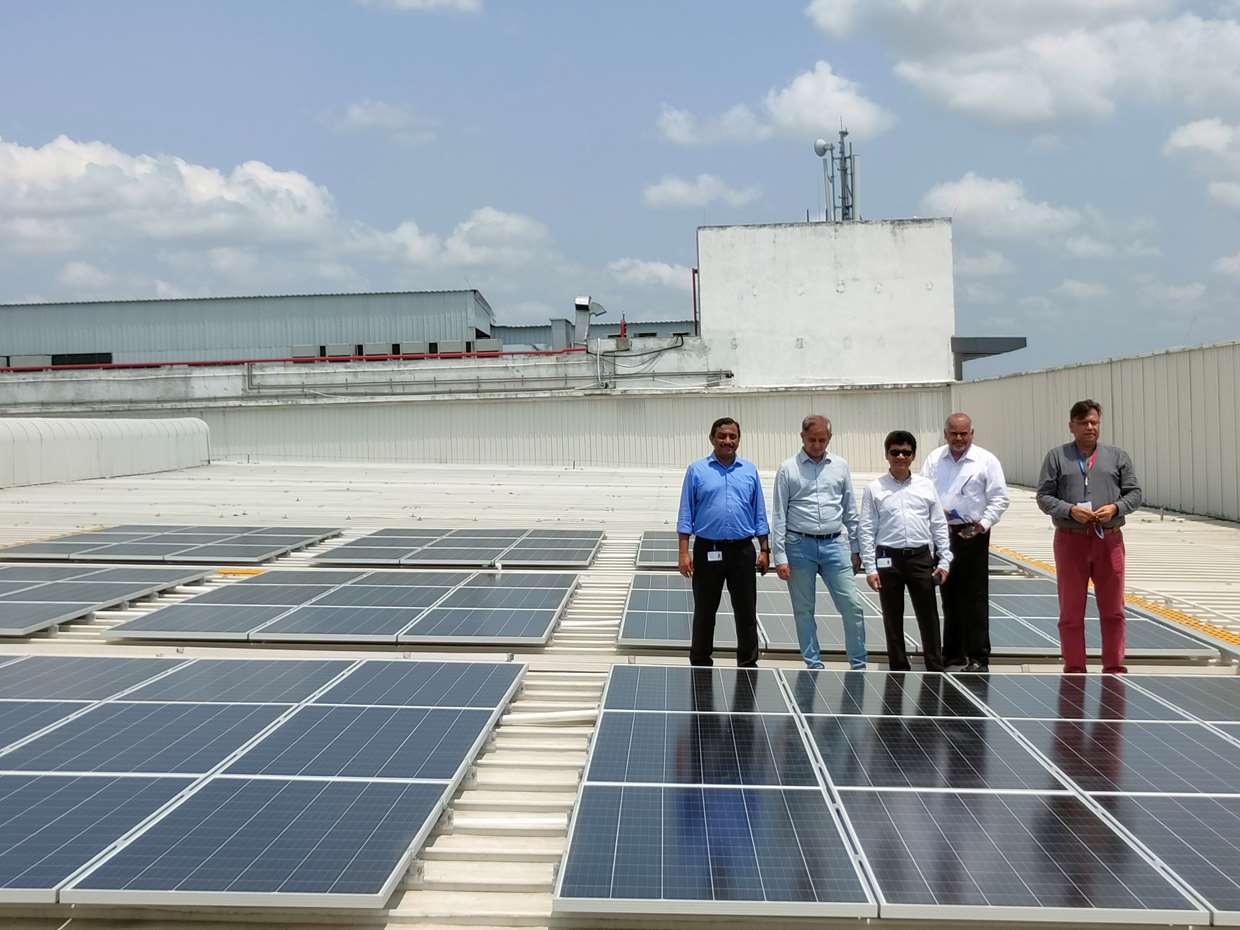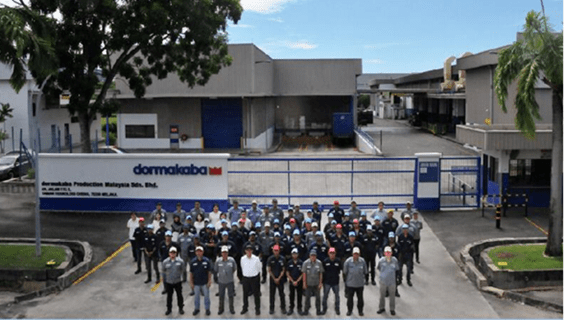Energy & Emissions
16 minWe are demonstrating leadership in the transition to a low-carbon economy within the industry and beyond.
Our approach
The emission of greenhouse gases (GHG), which are generated through the burning of fossil fuels, is one of today’s biggest challenges. Every business, government, and individual has a role to play in meeting the goals of the Paris Agreement. We understand the risks posed by climate change, and we take action to reduce our energy consumption and related emissions for a low-carbon economy. We use the latest scientific knowledge to guide a sound management approach, and our emission reduction targets have been validated by the Science Based Targets initiative (SBTi).
Our energy consumption and GHG emission reduction program is part of our global Environment Directive. Furthermore, our Expert Groups Environment, Health & Safety, and Sustainable Products are developing and implementing initiatives to achieve the related targets. One such target is the establishment of energy management systems at our manufacturing sites, which is key to managing and reducing our energy consumption. As at 30 June 2022, 67% of our plants, local assembly centers, and regional logistic centers have established energy management systems (vs. 21% in the previous financial year).
Our contribution to the fight against climate change
In 2018, we committed to setting science-based targets and in 2021, the SBTi approved our targets for operational and value chain emissions. We aim to reduce operational (Scope 1+2) emissions at least 42% in line with a 1.5°C future by 2030, without the use of carbon offsets (baseline 74,770 tCO2e in FY 2019/20). Any residual emissions will be voluntarily compensated through Gold Standard offsets to achieve our target of becoming carbon neutral as of 2030. We also aim to reduce our value chain emissions (Scope 3) from purchased goods and services, and the use of sold products by 25% by 2030 (baseline 1,124,936 tCO2e in FY 2019/20). Progress against the operational emissions target is being tracked as part of our sustainability-linked credit facility.

Many components used to create our products are manufactured in-house through processes including melting, aluminum and zinc die casting, and purchased parts also require further processing. Both of these processes impact total energy demand. As a result, we are focusing many of our energy-saving initiatives in this area. In line with our science-based emission reduction targets, we aim to reduce the energy intensity of our operations by 25% by 2030 (baseline 100.5 MWh/mCHF in FY 2019/20).
To achieve our ambitious targets, we are focusing on the following activities:
- Investing in energy efficiency projects
- Increasing on-site production of solar power
- Purchasing electricity from renewable sources
- Electrifying our fleet
- Improving the energy efficiency of our products in the use phase
- Working with suppliers to reduce their emissions
Our performance
Greenhouse gas emissions
In FY 2021/22, our total greenhouse gas (GHG) emissions (Scope 1+2) amounted to around 69,000 tCO2e. More than 55% were emitted as a consequence of electricity consumption, followed by vehicle and heating fuel consumption, and volatile as well as process gas emissions. Climate-related initiatives implemented during the reporting year resulted in total annual savings of approximately 17,400 tCO2e (over 25% of Scope 1+2 emissions).
Due to the implementation of the energy-saving initiatives outlined in the next section, we expect to reduce our annual GHG emissions by approximately 430 tCO2e. We have worked diligently to source renewable electricity or generate our own renewable energy where feasible, leading to an annual emissions avoidance of approximately 17,000 tCO2e. In addition, we expanded the production of on-site solar energy by 10%.
Greenhouse gas emissions by source (tCO2e)
Scope 1 and Scope 2 emissions (tCO2e)1)
- Greenhouse gas inventory calculated in accordance with the WRI/WBCSD Greenhouse Gas Protocol. Emission factor sources: UK Defra (2019), US EPA eGRID (2018), IEA (2019), AIB (2018).
- Scope 1: direct greenhouse gas emissions from sources owned or controlled by dormakaba.
- Scope 2: indirect greenhouse gas emissions from sources owned or controlled by another entity, as a consequence of the company’s activities.
- Biogenic emissions associated with the combustion of biofuel amount to 15 tCO2e. These are called "outside of scopes" emissions and reflect the impact of burning biomass and biofuels. The fuel source itself absorbs an equivalent amount of CO2 during the growth phase to that released through combustion.
- The greenhouse gas emissions associated with electricity consumption are reported according to the “market-based approach”, as defined in the Greenhouse Gas Protocol Scope 2 Guidance.
For historical and more detailed emissions data, view the ESG Performance Table.
ESG Performance TableYear-on-year absolute Scope 1+2 emissions (tCO2e)

Further expansion of solar power generation in Chennai
A key element of our climate transition strategy is to expand the scope of solar panel installations, particularly in regions where green electricity is not readily available on the market. Our manufacturing facility in Chennai (India) had already installed solar panels on the roof in FY 2018/19. In the reporting year, the installation was expanded to generate 200% additional capacity. Today, the site can cover 25% of its total energy needs from own renewables.
“In line with dormakaba's commitment to contribute to a sustainable industry and future, we have taken steps to reduce the carbon footprint of our operations in India progressively. Our additional investment in solar panels further fortifies this, and we are becoming less dependent on fossil fuels and embracing this renewable source of energy.” - Krishna Kumar Kp, Deputy Vice President Operations Region Asia Pacific.
Scope 3 emissions constitute around 90% of our combined Scope 1, 2 and 3 carbon emissions, highlighting the importance of Scope 3 emissions for our climate strategy. In FY 2019/20, we carried out a screening and carbon inventory development of Scope 3 emissions, which showed that the largest sources of Scope 3 emissions stem from purchased goods and services (75%) and the use phase of sold products (11%). For FY 2021/22, value chain emissions for the use phase of products totaled 263,700 tCO2e. As mentioned, value chain emissions from purchased goods and services represent the vast majority, totaling 868,300 tCO2e in the reporting period. Although emissions from purchased goods and services have decreased, improvements in data collection systems - including in the precision of country-level sales figures - have led to an increase in Scope 3 emissions as a whole (+0.62% versus baseline FY 2019/20).
Scope 3 emissions: purchased goods and services (tCO2e)1, 2)
Scope 3 emissions: use phase of products (tCO2e)3)
Year-on-year absolute Scope 3 emissions (tCO2e)
We reduce value chain emissions among others by procuring more goods with higher recycled content and by improving the energy efficiency of our products. Life cycle assessments and our digital Product CO2 Inventory Tool are key to understanding and reducing our impact.
Learn moreEnergy consumption
Our total energy consumption for FY 2021/22 was over 254,000 MWh. Electricity and fuels for heating or manufacturing constitute over 76% of the total energy consumption and play a crucial role in our production processes. Fuel consumption of our vehicle fleet makes up for the remaining energy consumption.
Energy-saving initiatives were implemented at various sites within the reporting coverage during FY 2021/22. This work included: retrofitting facilities to feature LED lighting and monitoring systems; upgrading equipment such as air compressors, air heaters and air dryers; and the optimization of heating and cooling systems.
Below are some specific examples of activities from our facilities across the world:
- In Fougères (France), by replacing one air heater, the energy consumption reduced from 600 to 356 MWh/year.
- In Suzhou (China), the replacement of an old air compressor reduced energy consumption by about 15%.
- At our Melaka (Malaysia) facility, retrofitting with LED lighting and the regulation of the cooling fan and pump operations from 100% to 65% daily, resulted in a reduction in electricity consumption of 7,689 kWh/year and 19,625 kWh/year respectively.
- At our facility in Singapore, an energy monitoring application for the air conditioning system was implemented, reducing the system's energy consumption by 25% versus the previous financial year.
As a result of these and other activities, we realized total quantifiable annual energy savings of approximately 2,700 MWh for the sites covered within the scope of this report. In addition, over 58,000 MWh (46.4%) of the electricity that we consumed came from renewable sources.

Focusing on energy efficiency and carbon savings potentials globally
Part of our commitment towards a 1.5°C future is to reduce our operational emissions by 42% by 2030 (baseline 74,770 tCO2e in FY 2019/20). To reach this goal, we started a Value Discovery Audit process in partnership with Siemens at 10 of our largest manufacturing sites (Taishan (China), Chiayi (Taiwan), Rocky Mount (USA), Dyersville (USA), Indianapolis (USA), Montreal (Canada), Quebec (Canada), Melaka (Malaysia), Singapore, and Suzhou (China)).
The aim of the partnership is to execute projects based on audits to discover energy efficiency and carbon savings potentials, to maximize energy and CO2 savings by implementing the right strategies and measures for the unique site. Siemens, in cooperation with dormakaba employees, identified efficiency and savings opportunities, ranging from low-cost operational improvements and control optimization approaches, to capital-intensive equipment retrofits with an emphasis on the highest priority conservation initiatives.
The Value Discovery Audit has been successfully closed at the ten sites, resulting in a discovered potential reduction of over 4,000 tCO2. To reach our 42% reduction target, further initiatives are planned to fill the gap, including the electrification of the fleet, and green electricity projects.
Energy use (in MWh)
Electricity by source (in %)
Outlook
One of the major areas of work in the upcoming financial year will be the continued global partnership with Siemens to support the development of Investment Grade Audits for larger plants in Asia and the Americas. We expect the installation of more energy-efficient equipment to begin in the second quarter of 2023.
To support the transition to e-mobility in Germany, we will install 25 EV charging stations at our sites and 100 charging stations in employees’ homes. Additionally, solar panels will be installed on the rooftops of two large manufacturing sites in the Region Asia Pacific. Finally, 13 sites will complete the set-up of energy management systems.